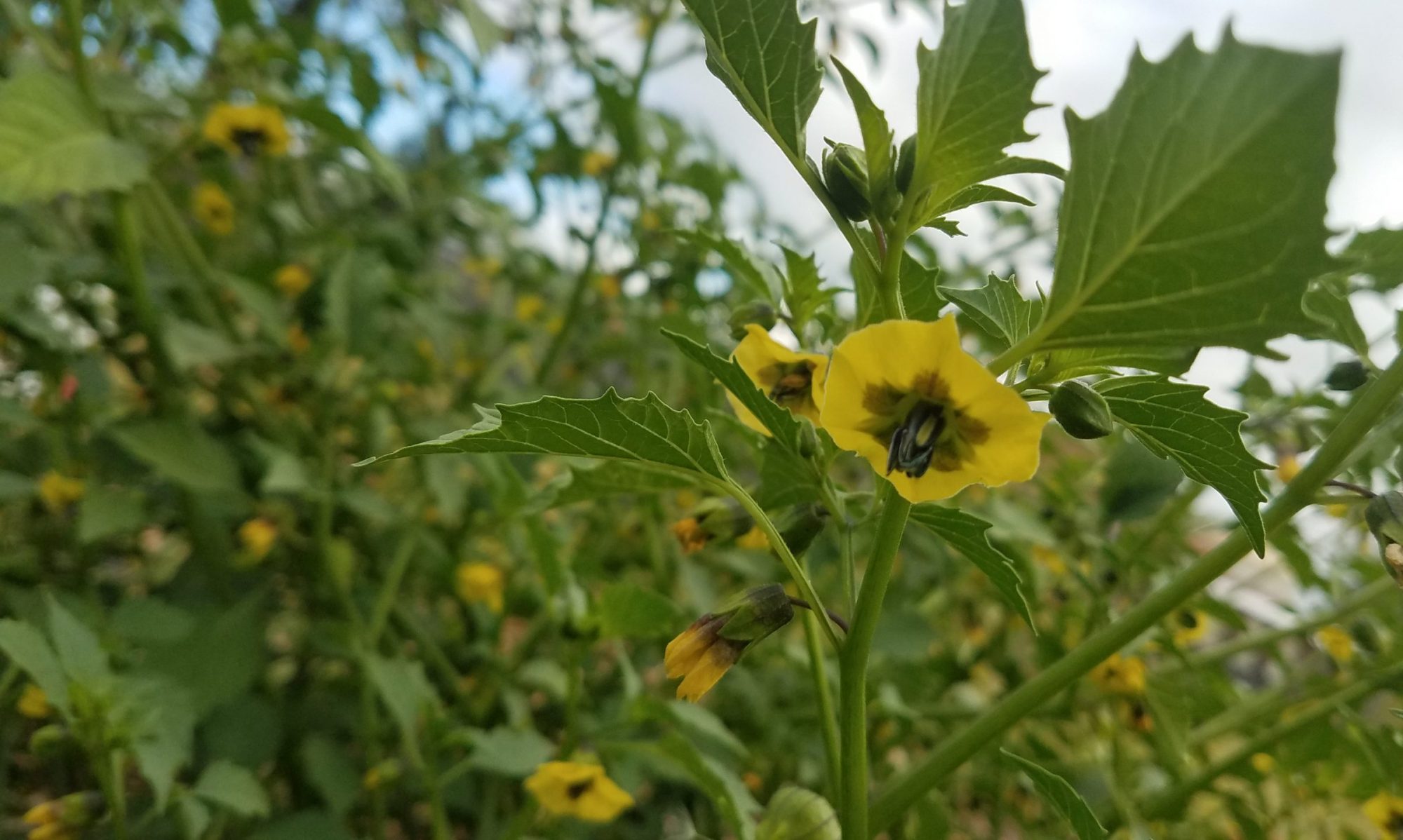The gopher took out half of the peas, right in peak season. It demolished the roots and left the rest. At least we were able to take one last picking and then feed the plants to Nixon the rabbit. What a waste, though. We don’t know what to do.
Perfect day for working outside today: cloudy and 70°. We tackled a bunch of weeds around the house and added wood chips.
Earlier this week, I planted the first 4 corn seeds, and Heather planted cranberry beans. Today I planned about 8 feet of bush beans. We also picked up some compost from the city, and I spread some around the plants.
I harvested about 2 cups of strawberries. I think that’s the most I’ve ever harvested from our own plants in my entire life.
Not all of the peas sprouted, but the ones that did look super healthy now and are about a foot tall.
I did a weeding blitz in the garden a few weeks ago and tackled it again today. We have some stubborn grassy spots that I’m not happy about.
Heather planted peas in row 1 and potatoes in row 2.
We have a pretty good supply of chard and a little bit of kale. And thousands of little orach plants all over the place.
Lots to catch up on…
The peas just kept on peaing through the summer. We got the last of them, for the most part, a week or so ago, but we’re still getting a few more here and there.
The green beans finally started producing and we got plenty for a few weeks, but they’re about done now.
We harvested the last corn on the cob last week. It was probably about a week past it’s prime.
I planted Chinese broccoli in early August, I think. It bolted quickly, but I cut and used the stalks. It also got aphids real bad on the buds and flowers, so I tossed those parts. We planted kale right next to the Chinese broccoli a few weeks ago, and a few aphids were showing up there, too. But we’ve been able to start picking some kale (and chard) last week.
The potato and chickpea harvests have been good. The tomatoes were late this year, but they’ve been doing well. We bottled about 36 points of pizza sauce. We’ll make salsa with our next batch. Which reminds me: the peppers have been solid producers this year: banana, jalapeño, and poblano.
Our plum tree about killed itself this year. Literally, several branches broke from the weight of the fruit. We made some great plum BBQ sauce and sweet & sour sauce. We harvested a bunch of purple plums from Wayne’s tree a few weeks ago and dehydrated them.
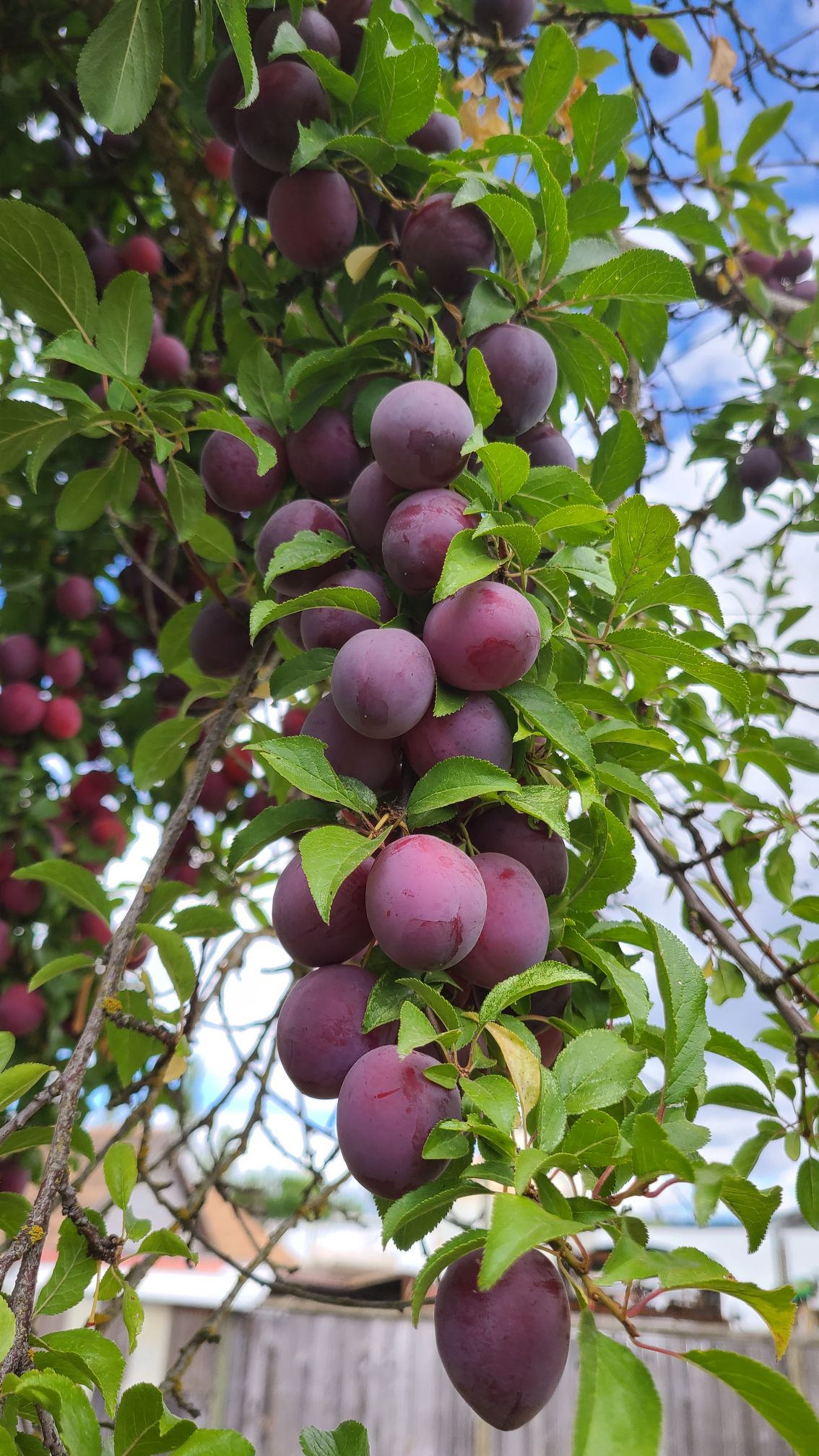
Heather started planting garlic today.
We harvested two of the young goats with much-appreciated help from our son-in-law. It’s a hard thing to do. He got one and we kept the other. We put 20 pounds of meat in our freezer. Heather was able to sell the other two young goats this week. They went to a lovely piece of land a few miles west of here to work in brush management.
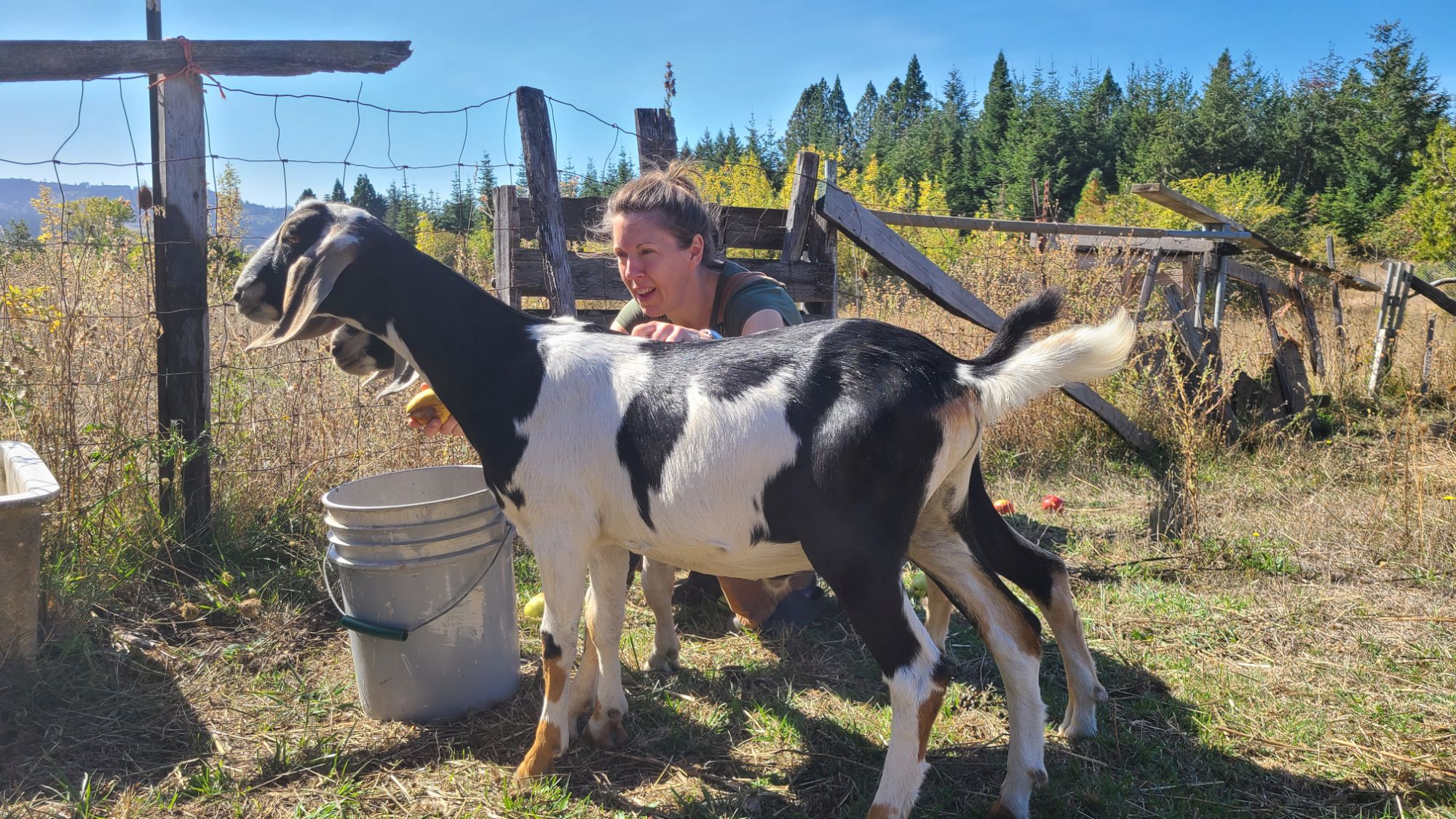
A Pineapple Express dropped a half inch of rain yesterday.
The hops plant accidentally got weed-whacked, but it’s regrowing… plus, we noticed a couple additional bines coming up from the ground, too.
The first planting of potatoes is looking great. We planted the rest of row 2 in potatoes today.
The peas are sprouting.
The first planting of corn has a couple of sprouts coming up. I did the second planting today.
We have plenty of volunteer orach and lettuce.
I planted Oregon sugar peas and the first 12 sweet corn seeds in row 1 of the garden. The dirt on that row seems really compacted, so we’ll see how it goes.
We planted potatoes in part of row 2 a few weeks ago. They’re up and looking good.
We’ve had a good amount of volunteer lettuce and orach growing that we’ve been harvesting and enjoying at the dinner table.
We transplanted tomatoes and peppers last weekend.
We watched a deer decimate the fresh leaves on our grapevines yesterday. I’m glad the netting around the garden is working to keep them out.
The baby goats are all growing quickly. They’ve all been disbudded. In a few weeks, they’ll get banded and turned into wethers.
I think I’ve already ruined the new chainsaw engine. Not sure what’s going on.
November 1st, and we’re still picking peas. They’re not as good as summer peas, but I won’t complain!
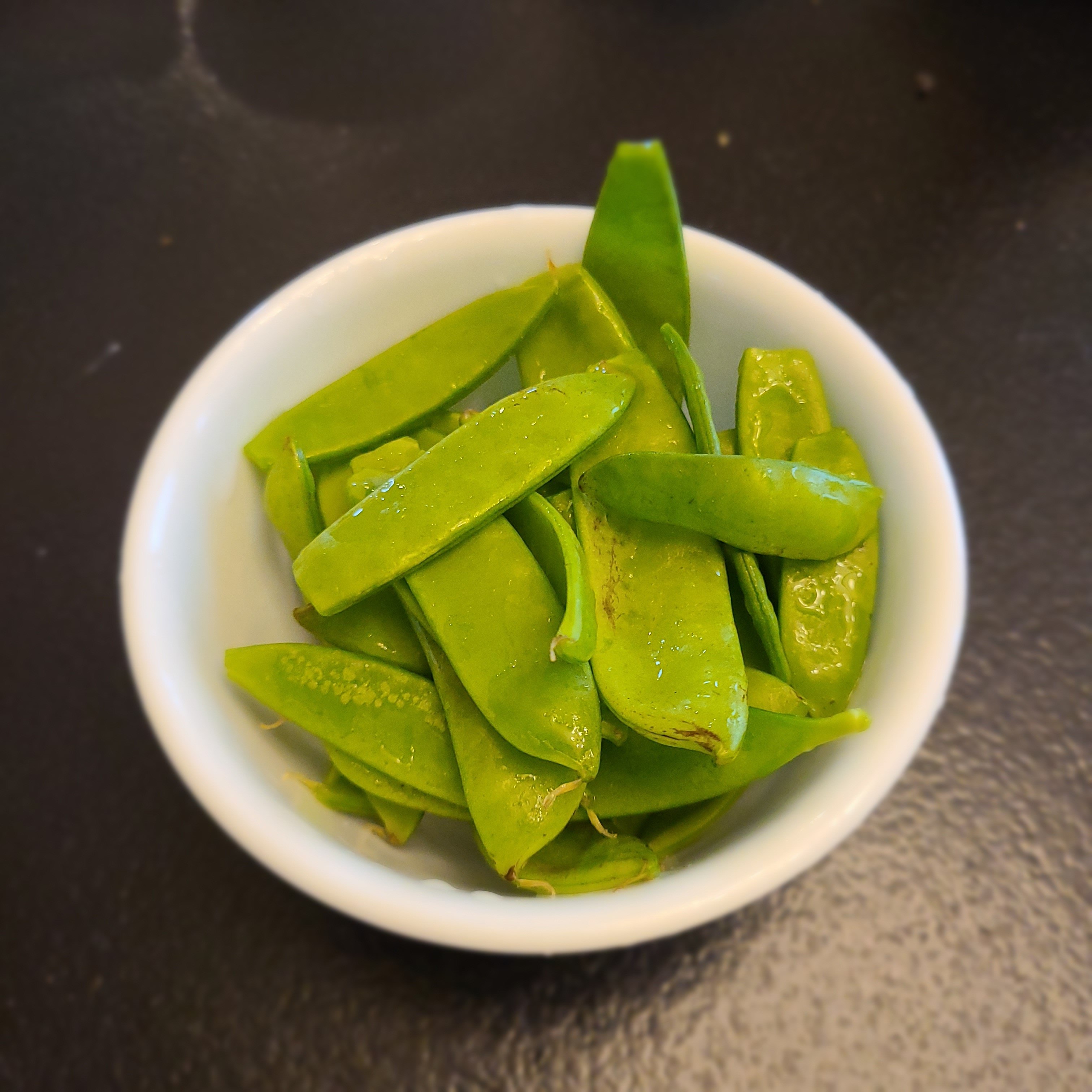
I think the mushroom harvest has finally ended. Wow! I’m pretty sure we have a year’s worth of dehydrated mushrooms thanks to Heather’s work.
The new growth on the artichoke plants looks great. They’re over two feet tall. Im excited to see what next year brings.
As of yesterday, we were still harvesting tomatoes and the late summer planting of peas. They’ve definitely slowed down, though, with fewer hours of daylight.
Heather pulled two potato plants today and got several pounds of potatoes. Here’s the biggest one:
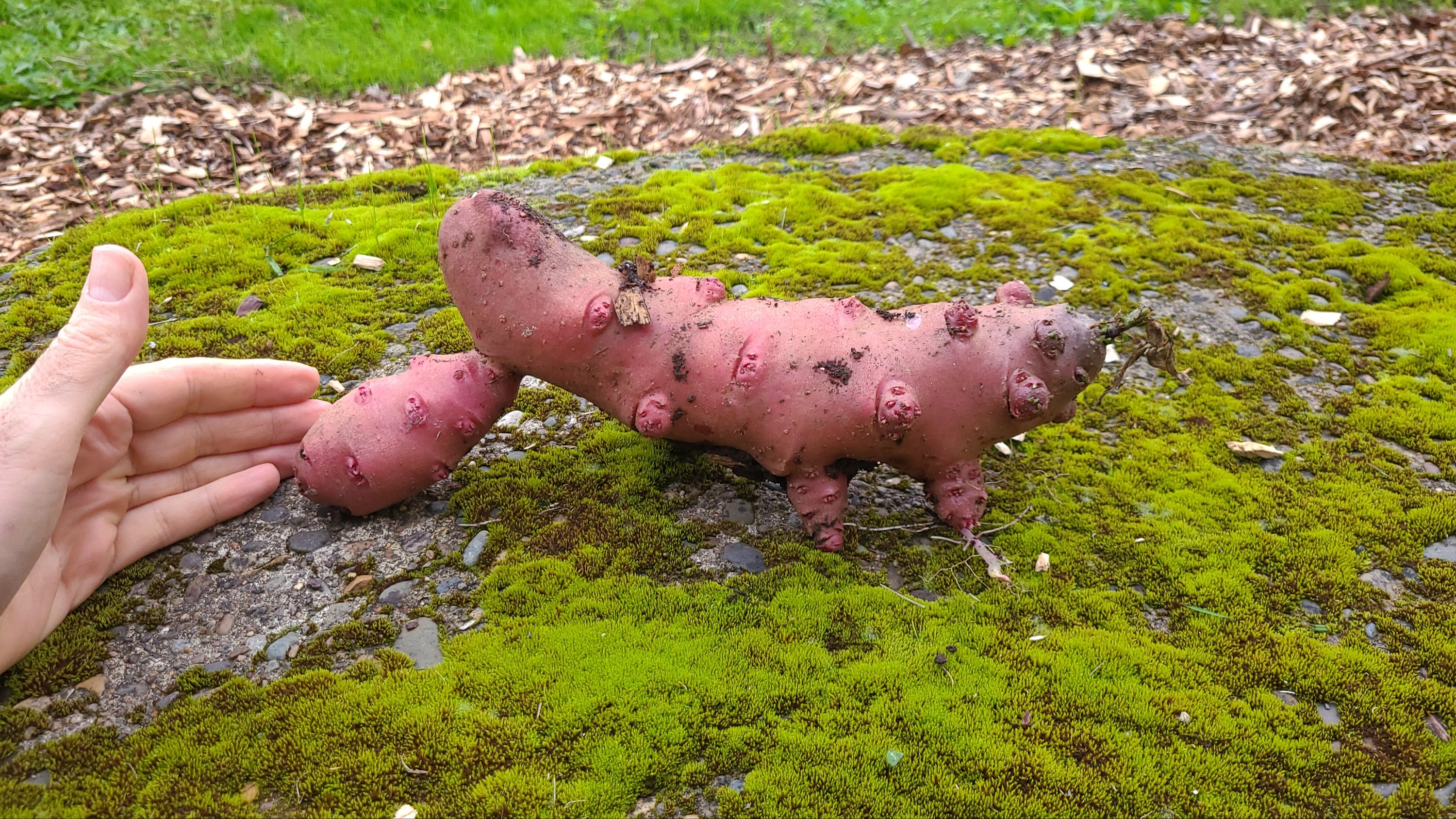
She also harvested a rutabaga. There are several more out there. Plenty of kale and chard, too. And we haven’t even touched the leeks yet
Heather planted garlic in the garden and around the grapes around the beginning of October. It’s already sprouting.
We started moving some firewood into the carport for this season’s burning. We still have a lot of wood to split to get ready for next season.
We started harvesting our second pea planting of the season yesterday.
Heather pulled out the bush beans yesterday. We’ll get some dry beans plus some beans for planting next year. I turns out the beans kept on producing, and I think if we had kept harvesting, they would have kept coming.
The artichokes are sending up second sprouts now. I need to read up and learn what that’s all about.

This is our second basket of beans, picked a few days after the first. It takes over an hour to harvest this amount.
Our trail cam recorded one deer the night after we put up the netting, and none since. Even the roses by the front porch are blooming again. Not sure why they disappeared so completely
With the deer gone, the peas have given another nice flush of pods to harvest.
We installed three lines of 50lb monofilament around the garden a few days ago. The same day, the field across the street got mowed. The guy who mowed said he saw several deer bed areas. Since that day, the garden is doing better, but we don’t know if it’s because of the monofilament fence or the mowed field.
The volunteer orach plants (from the ones that went to seed last year) have been doing really well. We got our first handful of bush beans today, and there are tons of blossoms. I think the peas are done (healthy vines but noore blossoms). The third planting of corn is sprouting.
Heather planted potatoes on March 18.
This season has been cold and wet, and we think our about two weeks behind normal. I’m trying to pay more attention to the environment than the calendar to know when to plant things. Our plum tree is finally blossoming, and dandelions are starting to bloom. The pear tree and the young fruit trees are still at bud stage.
Heather planted peas yesterday. She also transplanted kale from the cold frame to the open air garden.
The onions are taking root and starting to grow shoots.
We’ve been slowly harvesting “perpetual spinach” (a type of chard) from one of the cold frames. I’ve also enjoyed harvesting the abundant dandelion greens.
The months of February through June were a series of time-delayed successes.
A.k.a. “failures”
I learned, relearned, and forgot what I learned–then remembered it again.
All this is to say that today is June 7th and we have fresh sugar snap peas, new spring kale (as opposed to the old flowering kale from last year), orach, green chard, and lots of robust plants that we’ll harvest over the summer (like carrots, potatoes, beans, tomatoes, shelling beans, cucumbers, squashes, and peppers) .
This post is also to say that I will be taking up a new hobby next winter. This winter my hobby was “planting seeds too early and watching them die.” It was tedious.
I learned this winter that if you plant seeds that need to be in their pots for more than 2 weeks, you need to have a bigger pot. I used tiny cells and 90% of the seedlings died. I also learned that just because last April was hot didn’t mean that this April, or May or June (so far) will follow suit. It’s been a cold + wet spring. Even the cold weather crops languished.
Our family loves being outdoors–and we’ve hiked and backpacked together for many miles. Someone once asked me a question on one of our backpacking trips that I think can be applied to gardening:
Do you hike to camp, or camp to hike? (Not that it’s relevant here, but I’m a “hike to camp” person. I love getting hunkered, cozy and settled under a tree.)
So, when it comes to gardening + eating fresh produce, which do I love more–being in the garden or eating the food from the garden? Do I live to garden, or garden to live?
Both. The fresh produce feeds me physically and working in the garden feeds me spiritually. I love the cycle of sowing + reaping. I love the being surprised by scrappy, vigorous volunteer plants. I love watching seedlings reach toward the light while building a strong root system underground. I find physical and spiritual nourishment in both the garden and the harvest. It’s no surprise that throughout God relationship with mankind, he chooses to show his love for us in gardens. It’s a place where I feel gratitude, peace, and abundance.
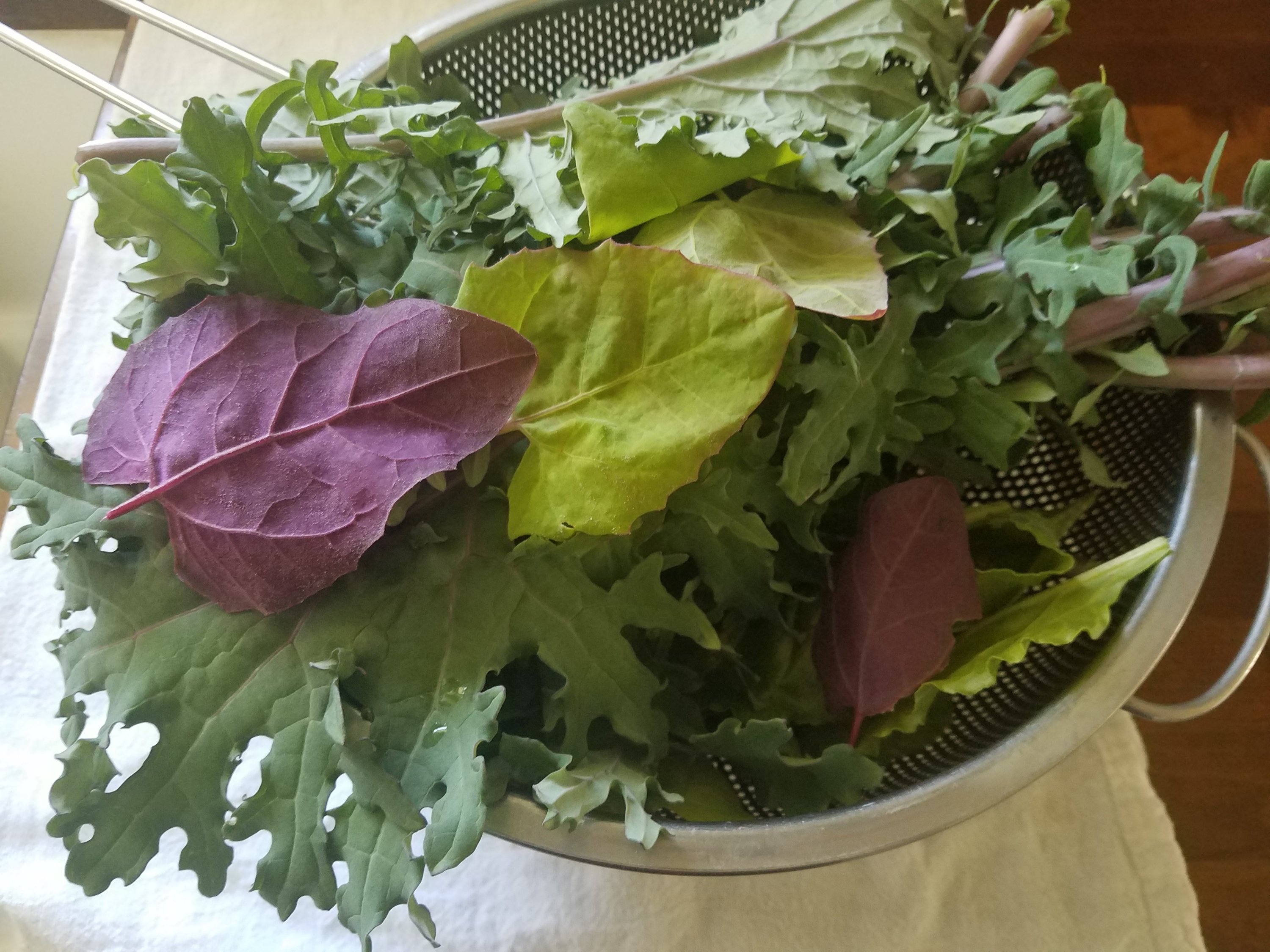
Good news! All of the peas I planted in our garden waaay back in February are now sprouted. Hello and good morning! I will never plant peas in February again. I will always plant them in early to mid March. February is not the time to plant anything in the garden. February is a time to plan, learn, teach, prepare, and organize.
I decided to plant fava beans today, as a cover crop. I put them in the tomato row and the pepper\cucumber row. It’s my first time putting down a cover crop. I sowed “Sweet Loraine Improved” fava beans.
While I was wandering around the garden, observing and thinking, I saw happy clusters of some friends I spent a lot of time with last summer. They were orach seedlings! I loved orach last year because it was happy in the cold, happy in the heat, it was tall, generous, soft, and never bitter. It sometimes goes by the name “mountain spinach”. We bought a pack of orach seeds last year that had five different colors of orach. I think all five colors sent out their seeds, and we will be flush with orach in a few weeks!
I have a few 1020 flats of seedlings that I think are going to go to the greenhouse. Our greenhouse isn’t cooled or heated. It’s my first year with a greenhouse, and I’ve already killed off a few flats because i wasn’t sure how warm or cool the greenhouse would be. Now that it’s March, we are above freezing on most nights. I think I’ll move my cool weather crop seedlings out. I don’t know if I can move my warm weather seedlings out yet. Maybe I’ll try.
Even though I spent a lot of time putting together my garden plan and mapping out where each vegetable would be, I have to be flexible. The orach volunteers ended up on the tomato row. Maybe a couple tomato volunteers will end up on the greens row. I could dig them up and transplant them. But maybe this divine chaos is what I need in my garden and in my life–allowing beauty and life to grow wherever there is space for it.
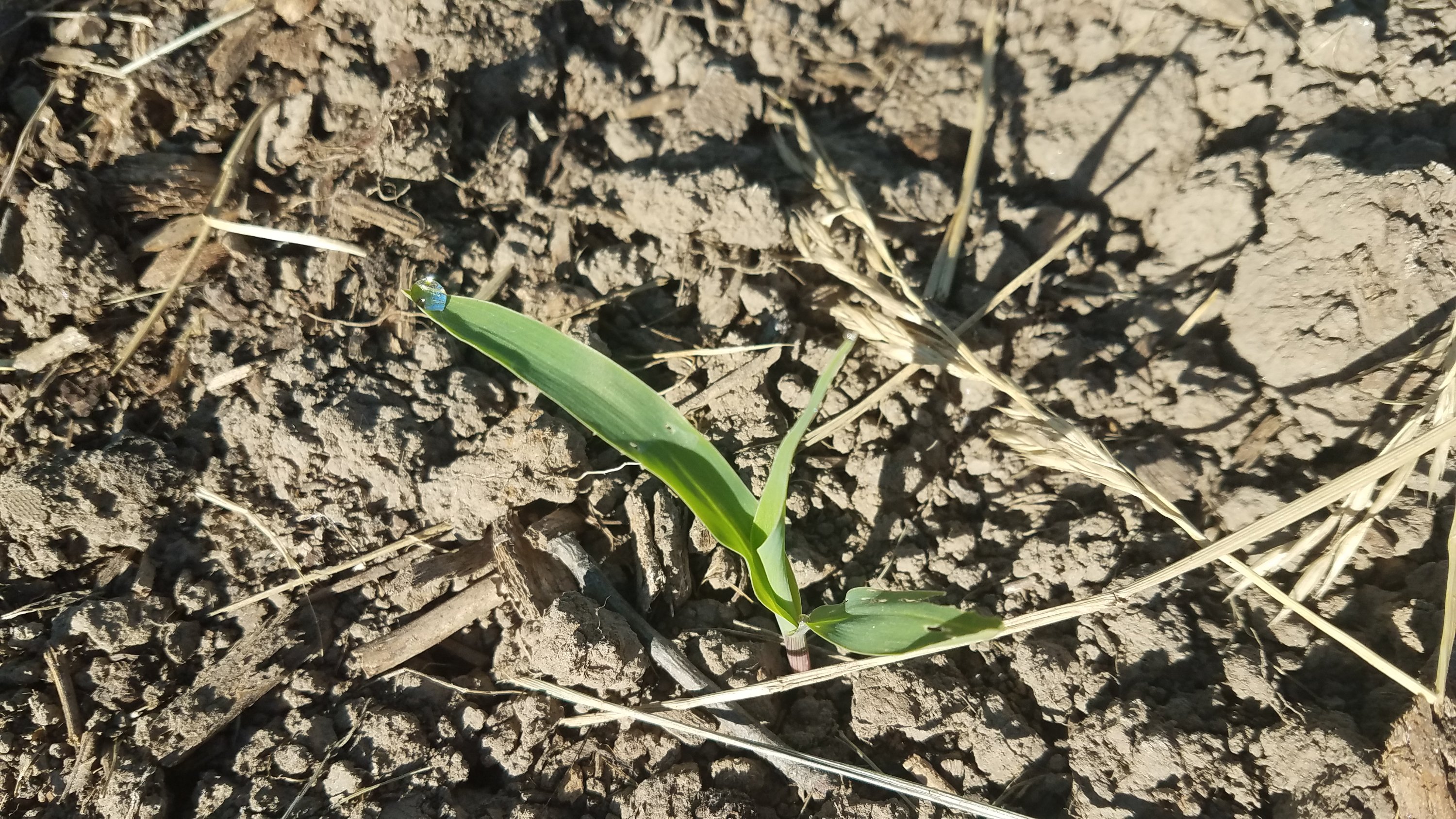
A corn (with a single tear trickling down its cheek) 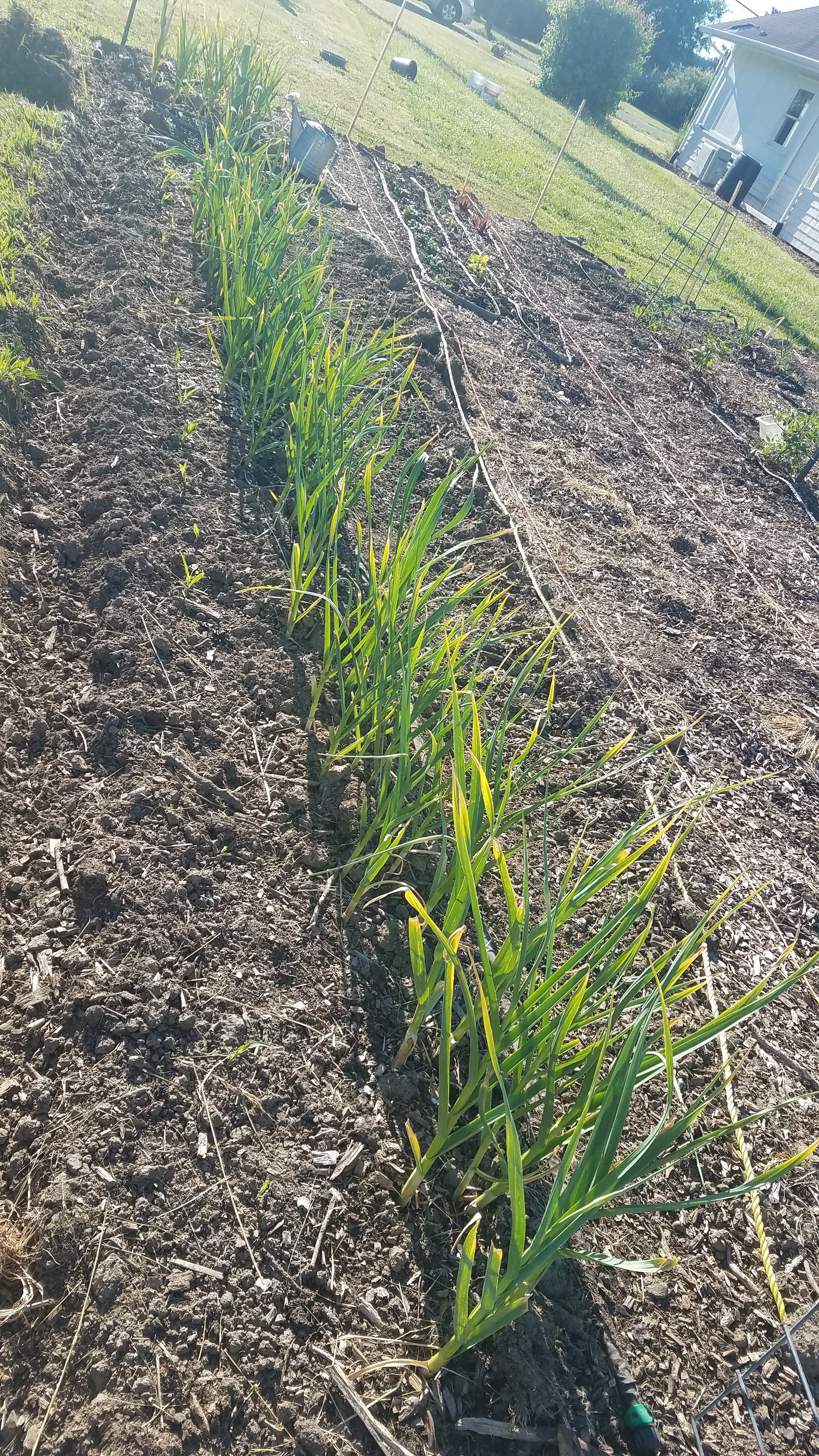
The garlics 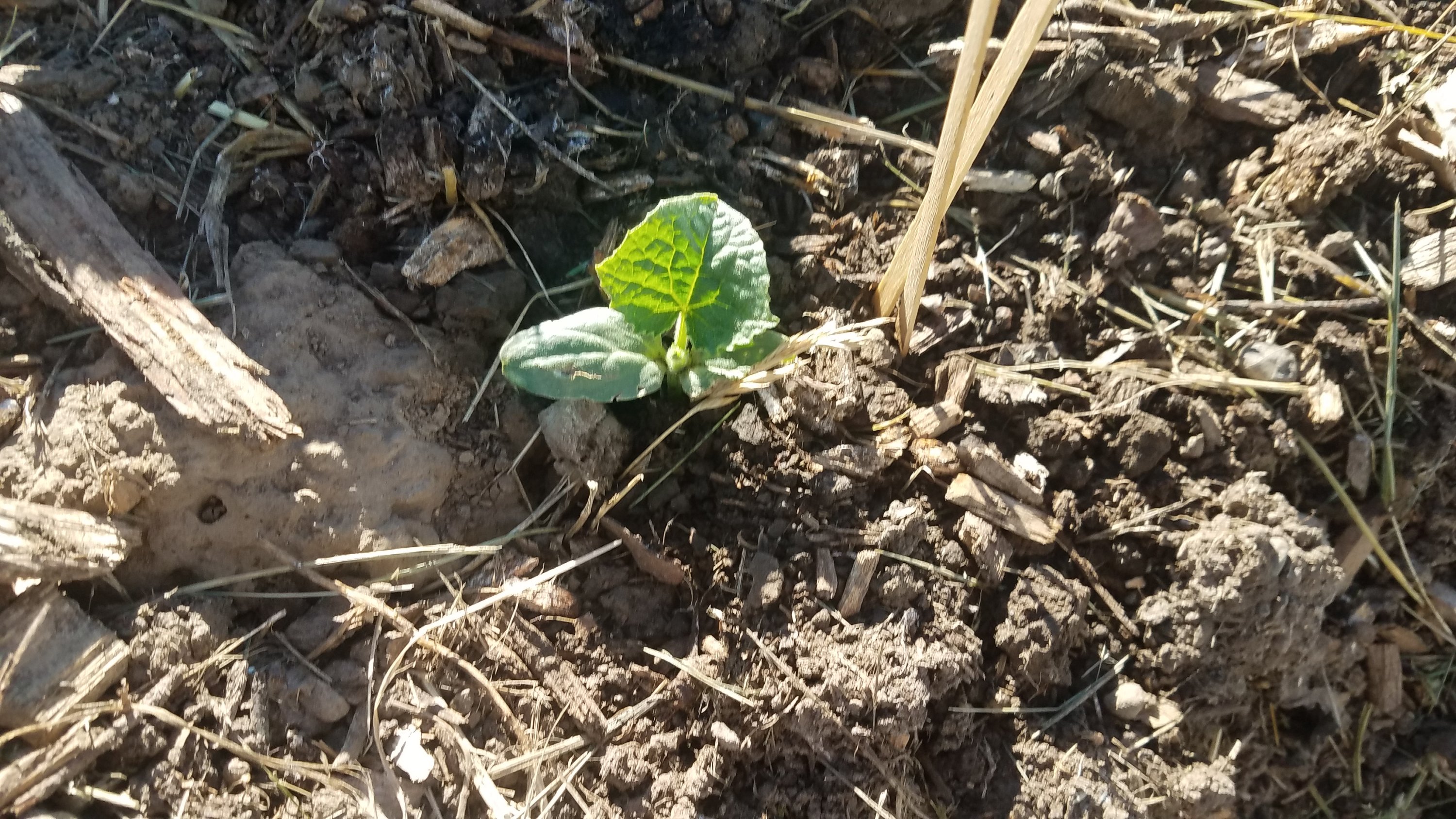
Mr. Cucumber (looking dapper, my friend!) 
The tomato gang 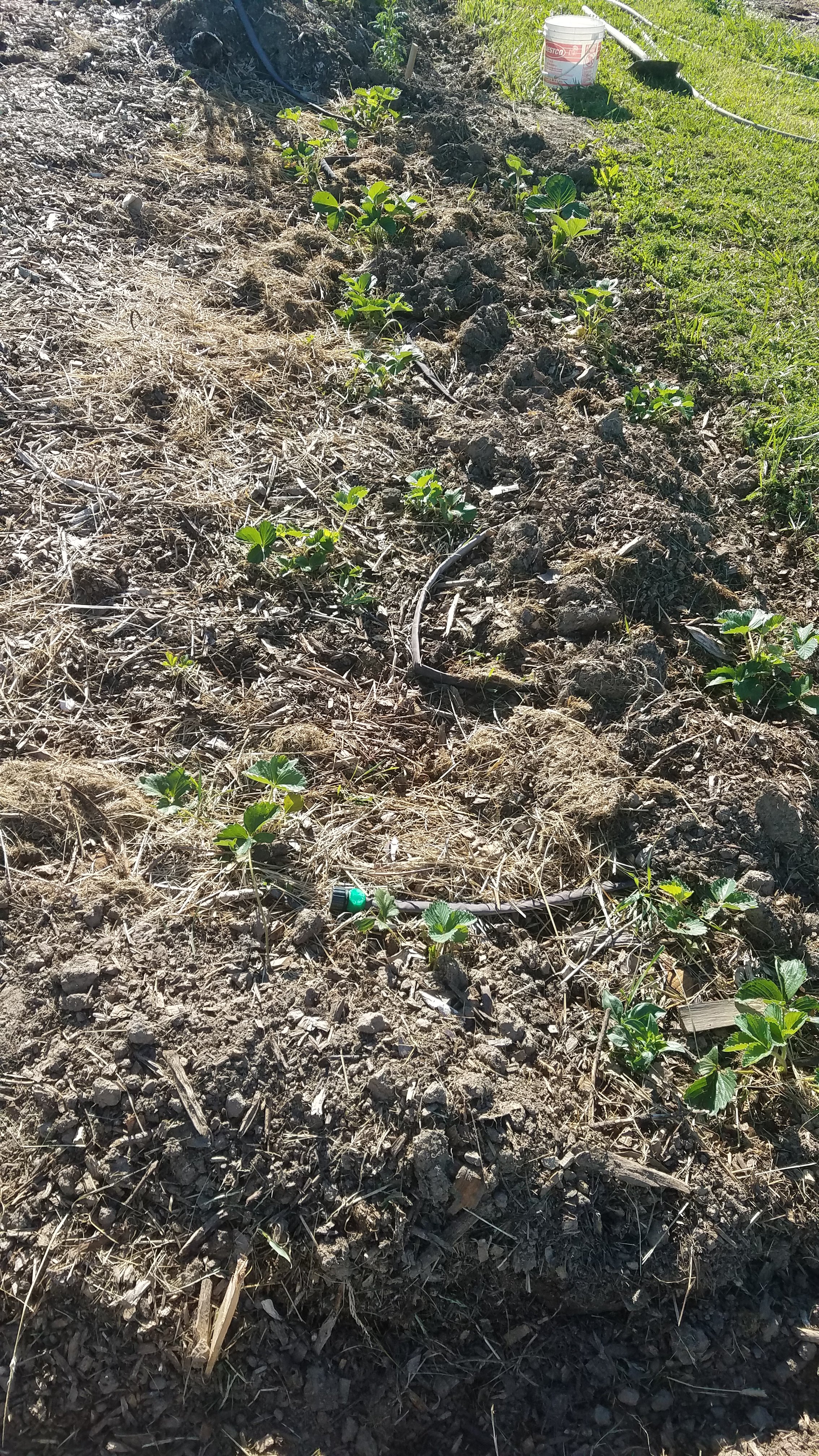
First year of everbearing strawberry plants from our friend Jan 
Beets. “Dear beets, you are much easier to grow than carrots. Love, the Garden” 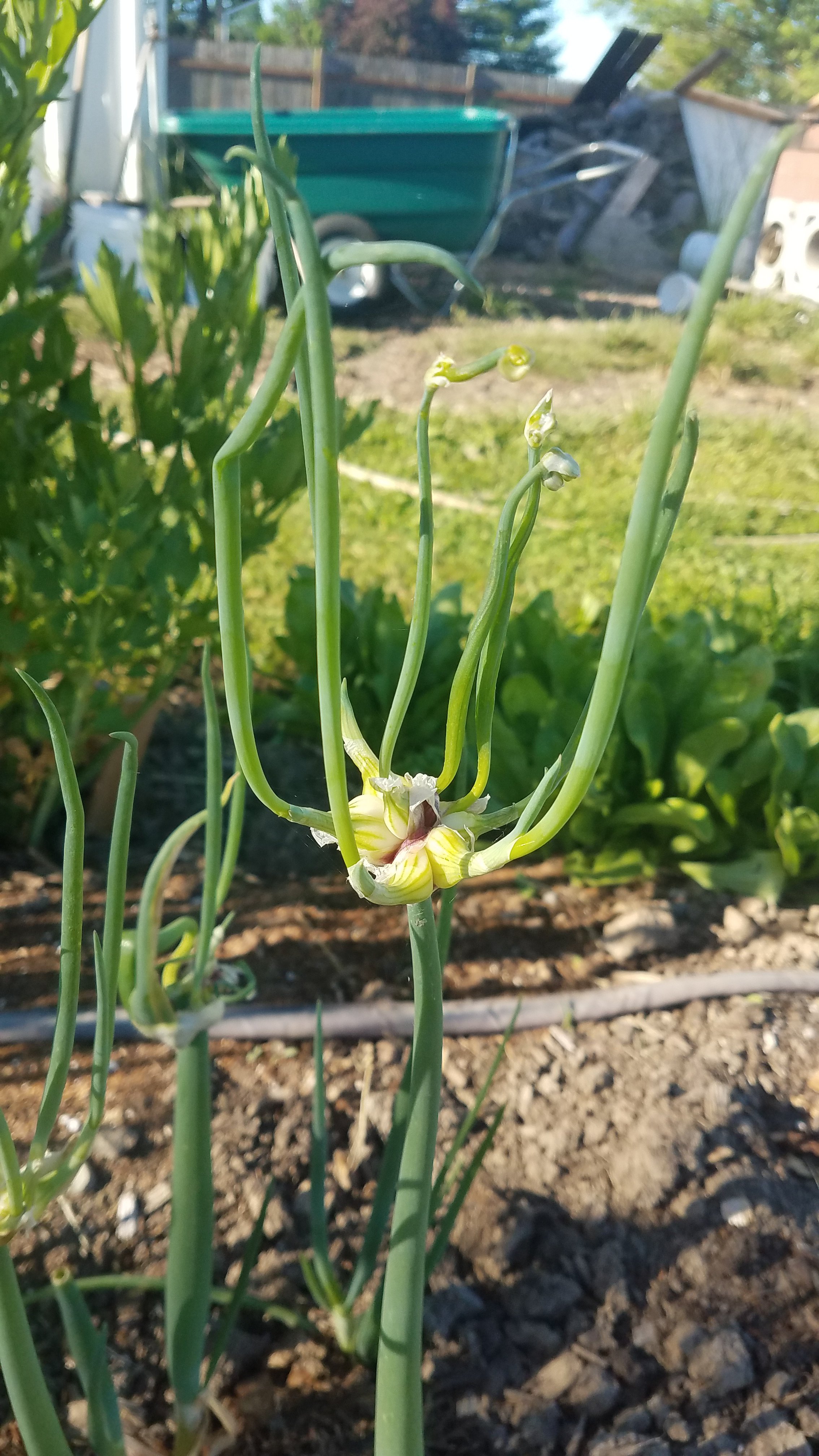
Egyptian walking onions… Part of my goal to have more allium in my garden 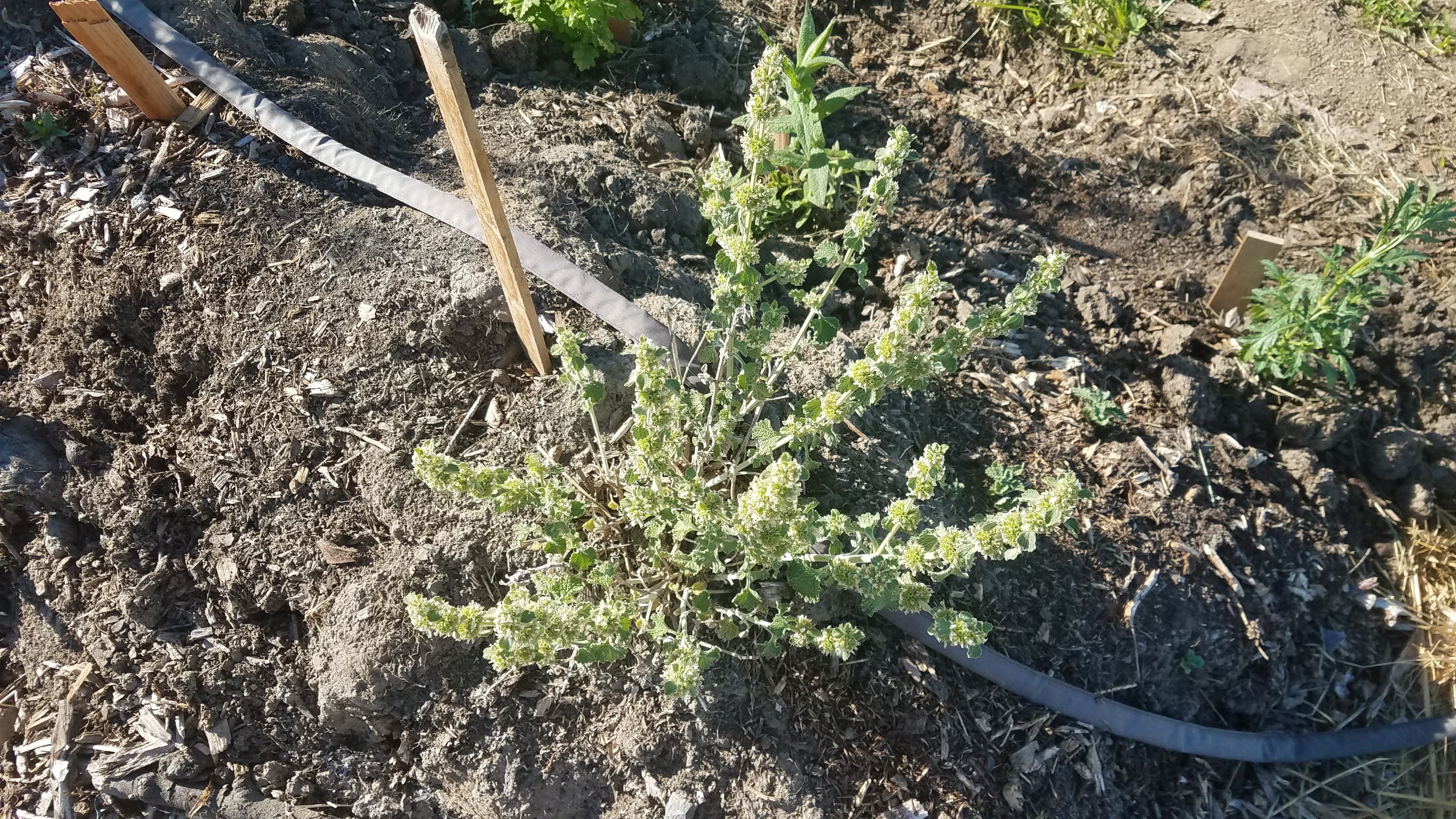
Horehound. She’s part of my new medicinal herb garden. 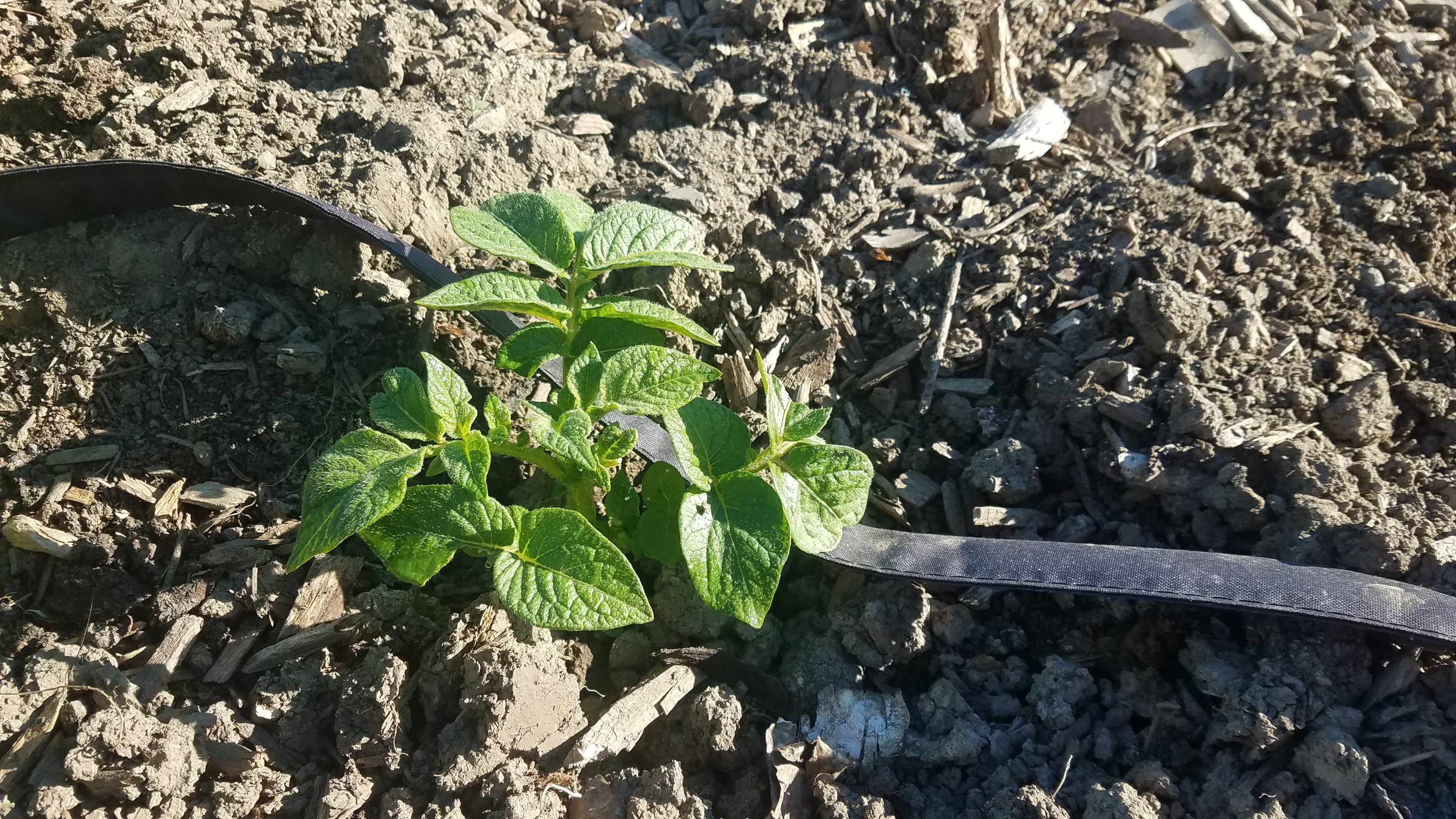
Holy cow! Potato plants really do grow from cut up potatoes!! 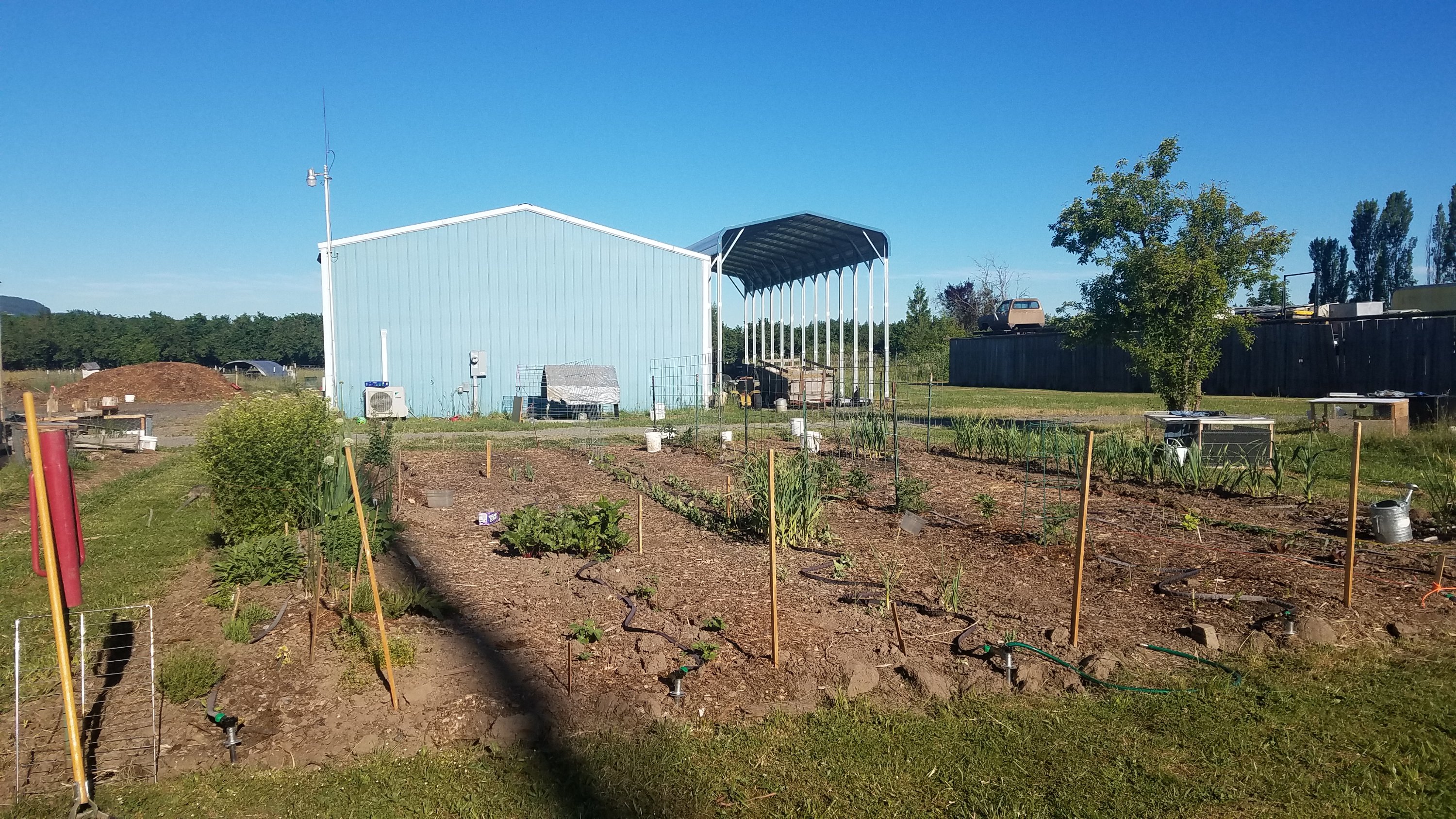
Our garden 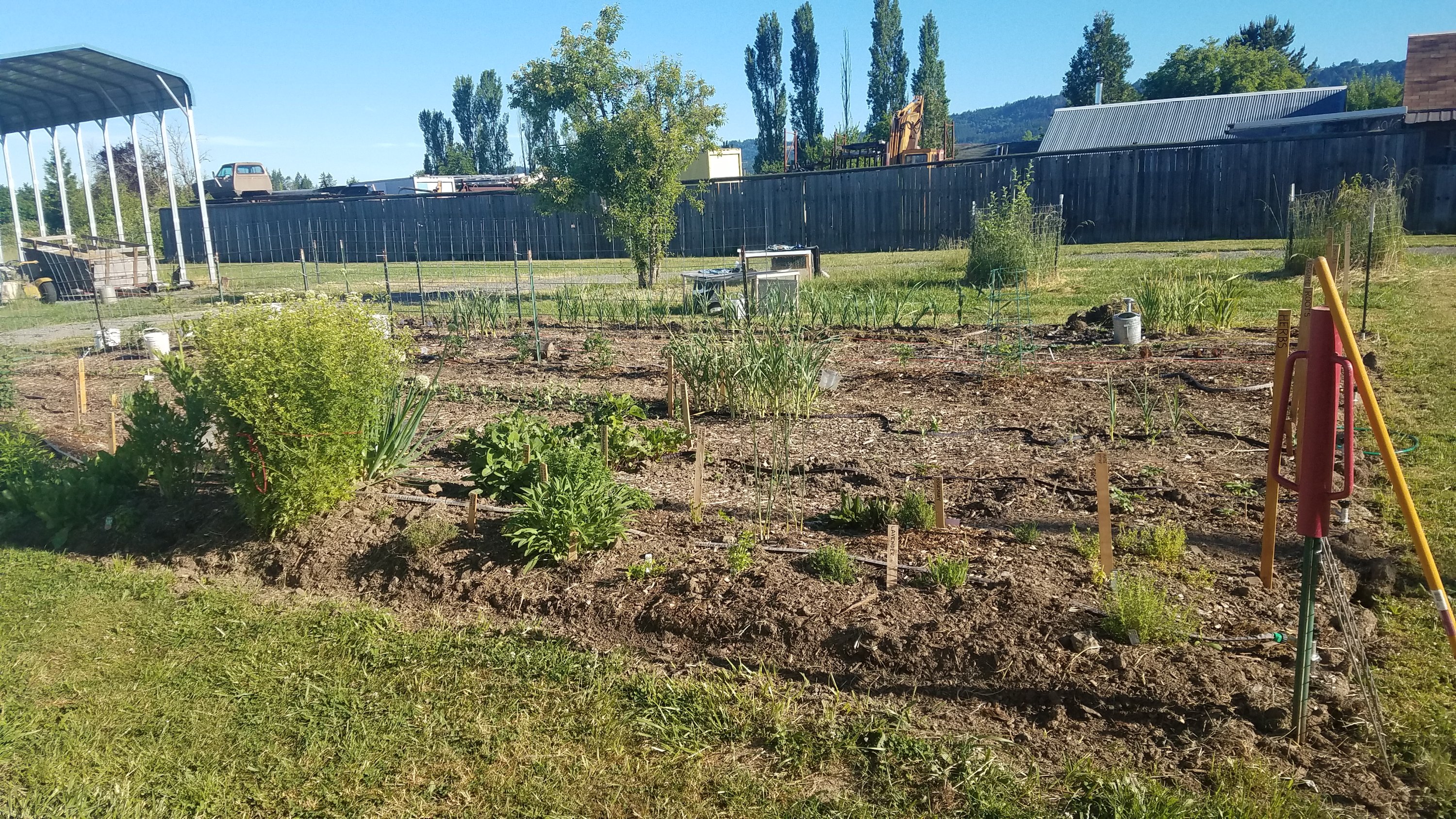
Again, our garden (big bush is chamomile)
Tour de jardine. La di dah.
Sometimes with gardens it’s easy to feel like you’re so far behind. Like “It’s already June 3rd and were not harvesting peas yet!” True–other years we harvested peas around this time, but last year at pea harvesting time we had zero garlic, a culinary herb garden the size of El Salvador (so teeny tiny, very very small, not big at all), and no overwintered greens. This spring has been very good to us, even though we have no peas to show for it. Our garlic all sprouted and grew, I harvested from the culinary herb garden all winter/spring, and we ate kale +chard all winter/spring like it was going out of style (because it is going out of style–orach is kinda the new kale).
We have no fresh peas yet, but it was the weather’s fault. Nothing more boring than hearing people talk about the weather (except for hearing people talk about video games or Avengers movies), so I’ll keep this short. April was supposed to be cool and wet, but it was freakishly hot and dry. So, no little pea fruits yet. Hopefully we’ll have a harvest before Thor’s hammer of heat withers our little pea shoots like spawned lava in Minecraft.
Lots of work in the garden today. We seeded peas and carrots. We transplanted six plugs of leeks, two Juliette tomatoes, a habanero pepper, and a Thai pepper plant, as well as six snapdragon plants. Heather transplanted a anise hyssop plant in the herb row. We laid down two more soaker hoses and watered. Things have been really dry lately for springtime. Today involved lots of weeding, cultivating soil, and raking.
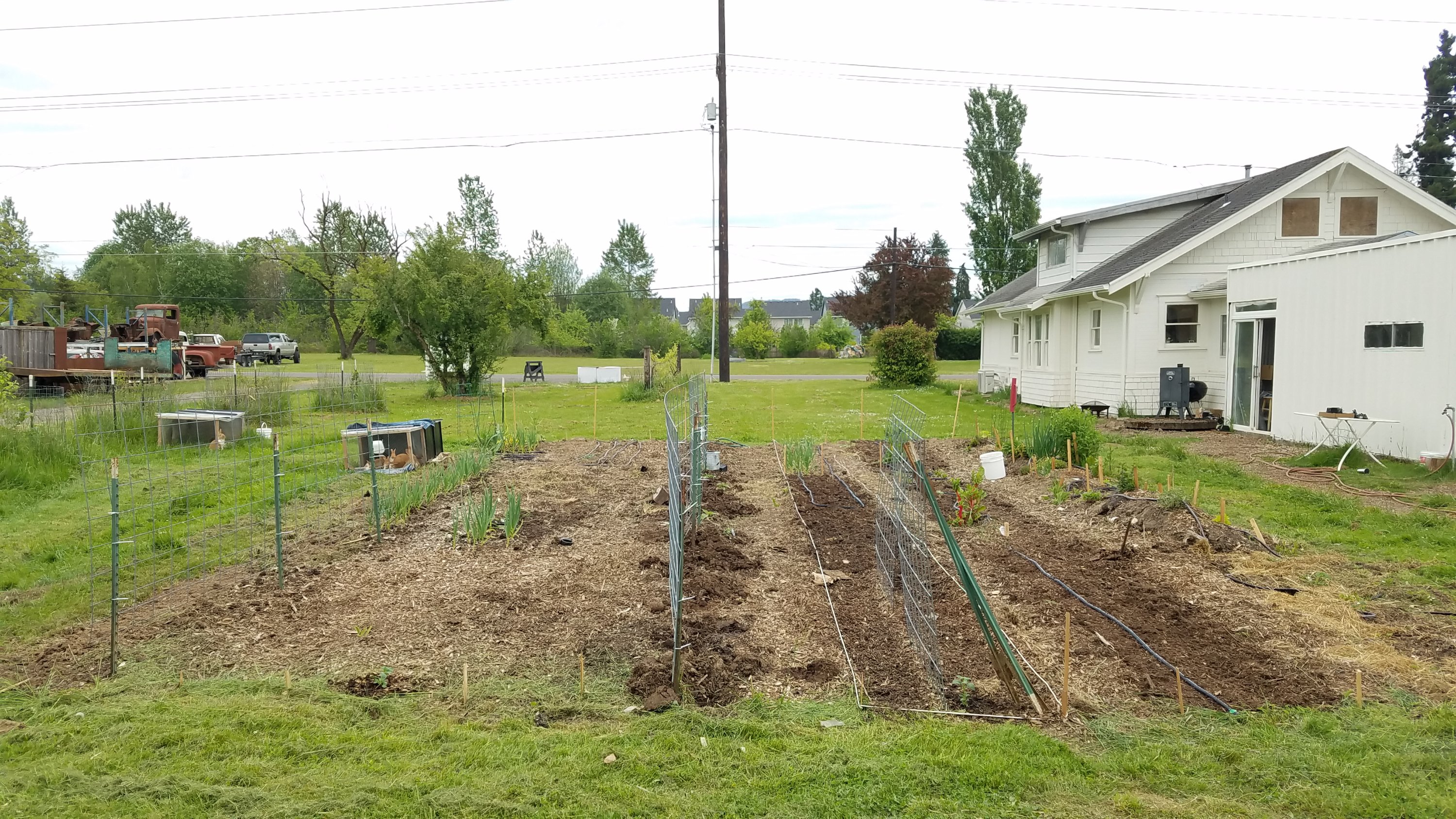
Yesterday I planted my multi-sown beet starts and some Oregon Peas. It feels great to be able to put some things in the garden.
I also planted carrots in a self watering bucket. I’m hoping those are successful, because up until now, 100% of my carrot attempts have failed. Always hopeful.
Then today I labeled my herb garden. Half is culinary herbs and the other half are medicinal.
We picked our first ounce of beans today. 😉 The beans that were barely alive are now looking quite healthy and should produce a good crop. The first cucumber and pepper should be ready this week. My peas are almost done for the season. They weren’t nearly as productive as last year but still provided some good table fare. The chard and kale continue to produce like gangbusters.

I seeded some carrots and spinach along the center of my row. The peas have been giving us a sparse harvest, and the beans are barely surviving, let alone growing. On the other hand, we’re harvesting plenty of chard and kale.
First pea harvest of 2020.
